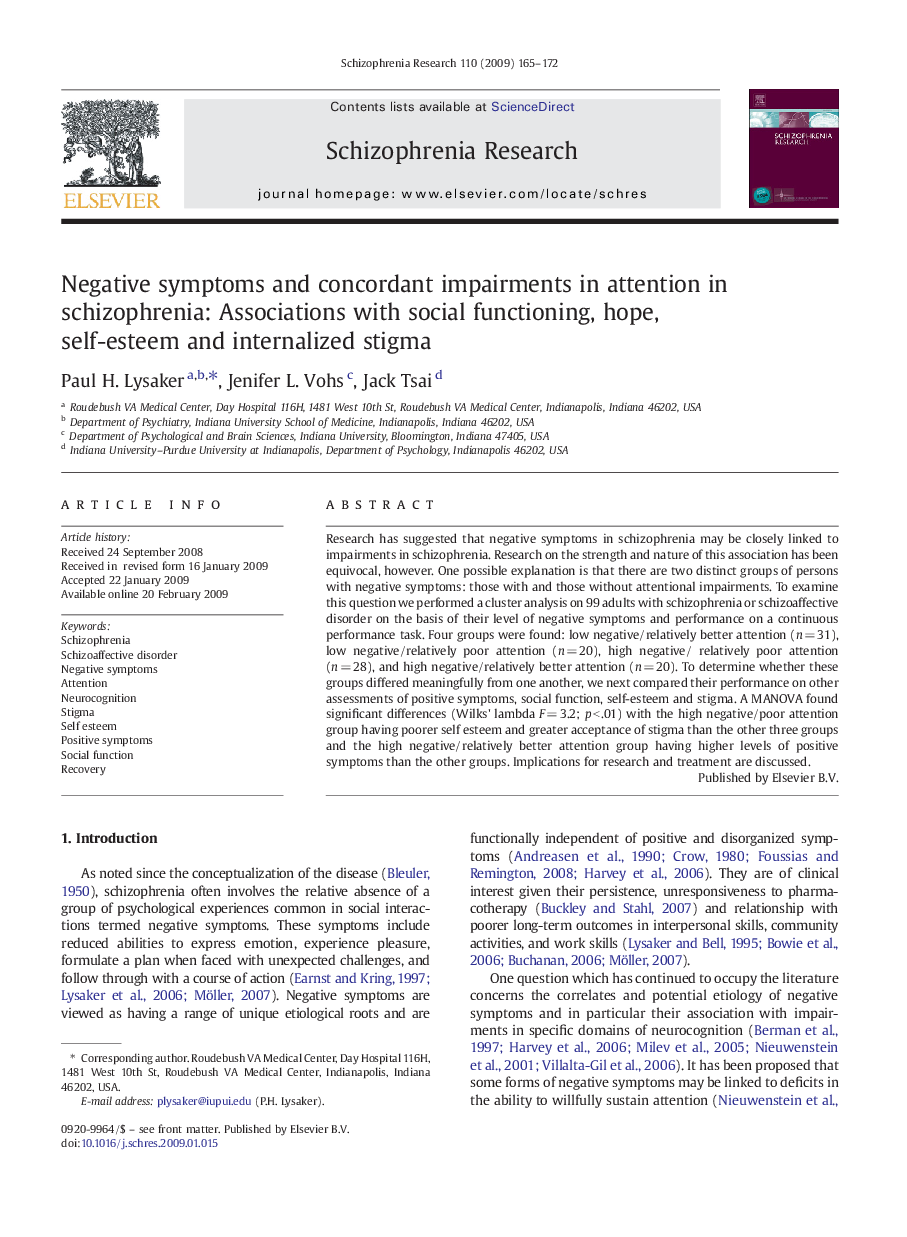| Article ID | Journal | Published Year | Pages | File Type |
|---|---|---|---|---|
| 339386 | Schizophrenia Research | 2009 | 8 Pages |
Research has suggested that negative symptoms in schizophrenia may be closely linked to impairments in schizophrenia. Research on the strength and nature of this association has been equivocal, however. One possible explanation is that there are two distinct groups of persons with negative symptoms: those with and those without attentional impairments. To examine this question we performed a cluster analysis on 99 adults with schizophrenia or schizoaffective disorder on the basis of their level of negative symptoms and performance on a continuous performance task. Four groups were found: low negative/relatively better attention (n = 31), low negative/relatively poor attention (n = 20), high negative/ relatively poor attention (n = 28), and high negative/relatively better attention (n = 20). To determine whether these groups differed meaningfully from one another, we next compared their performance on other assessments of positive symptoms, social function, self-esteem and stigma. A MANOVA found significant differences (Wilks' lambda F = 3.2; p < .01) with the high negative/poor attention group having poorer self esteem and greater acceptance of stigma than the other three groups and the high negative/relatively better attention group having higher levels of positive symptoms than the other groups. Implications for research and treatment are discussed.
